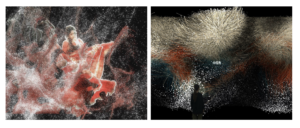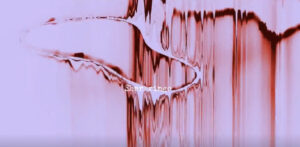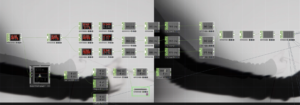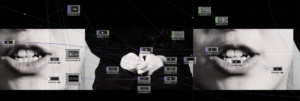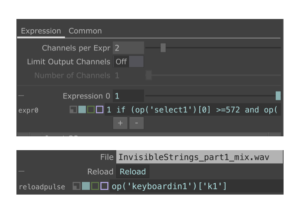Contribution
In this project, my main responsibility was the technical aspect of it. I completed the interactive design using Touch Designer and made adjustments to the Processing part while also experimenting with connecting Processing and Max via OSC. Also, I worked as the actress in our live performance.
In addition to my technical support role, I also acted in the experimental film as one of the daughter actress, playing the piano and providing hand acting for the mother’s hands. During the music recording, I played the piano and contributed some vocal humming sounds for the group.
Reflection
Throughout this course, I have been thrilled to collaborate with classmates from diverse backgrounds to create a multimedia interactive art piece. In my past creative endeavors, I’ve attempted to collaborate on an interactive lighting device based on Arduino. Unfortunately, due to the absence of team members with an art background, the final visual result fell short of my expectations. That’s why working on Invisible Strings has been so rewarding for me, as it has allowed me to finally bridge the gap between technology and art. I am grateful to my partners for providing me with a top-tier collaborative experience.
Of course, the creation of this project was not without its difficulties, and I encountered many challenges along the way.
At the beginning of the project, we spent a lot of time on the presentation of the project content and the expression of the theme. Although this made it possible for us to achieve a good visual effect, it also compressed the time we had to work on the technical aspects. Therefore, we had very little time to study the connection issues between Processing and Max. The night before the test, we spent six hours trying to transmit data from Max to Processing, but ultimately we only succeeded in transmitting data in the opposite direction. I think if we had more time, we might have been able to solve this problem.
Due to the shortage of manpower, I also had to simultaneously debug the Touch Designer, Processing, Kinect, and projector during the testing and actual performance. This meant that I did not have enough time to rehearse my dance before the performance, and as a result, the dance performance did not turn out as well as I had hoped.
Despite these challenges, the project’s theme of the piano resonated deeply with me. As someone who has studied piano for nearly ten years, I have had many arguments with my mother and have tried to avoid practicing. However, in this project, my past piano learning experience was valuable. The experimental video and sound design incorporated many of the pieces that I had practiced, causing me to reflect on my mother’s insistence on my learning and practice experience in the past.
I also tried using Touch Designer for the first time. Although we encountered many difficulties along the way, I learned a lot of knowledge. I hope to have the opportunity to continue exploring the use of Touch Designer in the future and create more projects.
Project Source File
Processing
https://drive.google.com/drive/folders/1oyMpaftdqVVoR2Yg1Jd-NMoTqF9XqOA1?usp=sharing
Touch Designer
https://drive.google.com/drive/folders/1mTUTHKC1a6cvSnVqj6IKhykOgJr1NG63?usp=sharing
Processing Test (Old Version)
https://drive.google.com/drive/folders/1b57YIC2tuZJ0PA9p-rgbjUhLvx3UEDa5?usp=sharing


